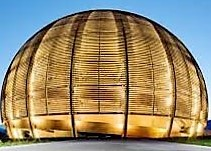Speaker
Description
One of the crucial ingredients for the improvement of stellar models in the framework of nucleosynthesis studies is the accurate knowledge of neutron capture cross-sections for the different isotopes involved. This type of measurements can shed light on the discrepancies between observed and predicted isotopic abundances by the stellar models and thus help to constrain the stellar media conditions where these reactions take place.
In the particular case of the radioactive ⁹⁴Nb, the 94Nb(n,γ) cross-section could play a role in the determination of the s-process production of ⁹⁴Mo in AGB stars, which presently cannot be reproduced by state-of-the-art stellar models[1]. As today, there exists no previous ⁹⁴Nb(n,γ) experimental data for the resolved and unresolved resonance regions mainly due to the difficulties in producing high-quality samples and also to limitations in conventional detection systems commonly used in time-of-flight experiments.
Motivated by this situation, an experiment to measure ⁹⁴Nb(n,γ) has been carried out at CERN n_TOF [2] including new detection systems and a high quality sample based on hyper-pure 93Nb material activated at the high- flux reactor of ILL-Grenoble. The experiment profited from the high-flux beam-line of n_TOF EAR2 [3] and an array of small Total-Energy Detectors in an innovative ring-configuration around the capture sample, which allowed us to significantly enhance the signal-to-background ratio during the experiment. In addition, two conventional C6D6 detectors and a high-resolution LaCl3(Ce) were employed for addressing reliably systematic effects and uncertainties. At the time of the conference preliminary results on the ⁹⁴Nb(n,γ) cross-section will be presented together with a discussion on possible implications of this cross-section measurement for the s-process in the region of the Mo isotopes.
[1] M. Lugaro et al. APJ (2003) 486.
[2] J. Balibrea et al: CERN-INTC-2020-062
[3] C. Weiss et al., NIM-A 799, 90-98 (2015)
